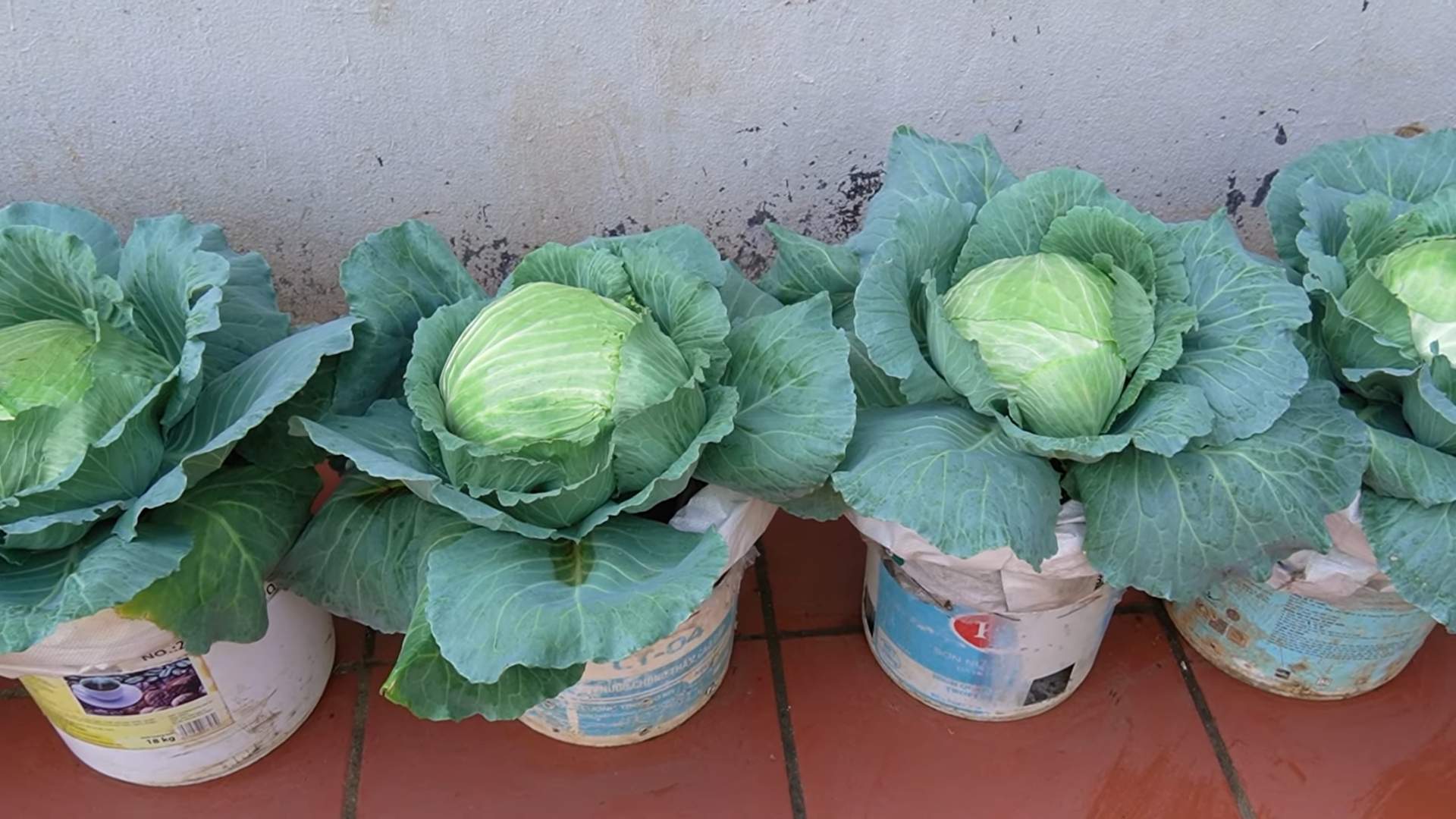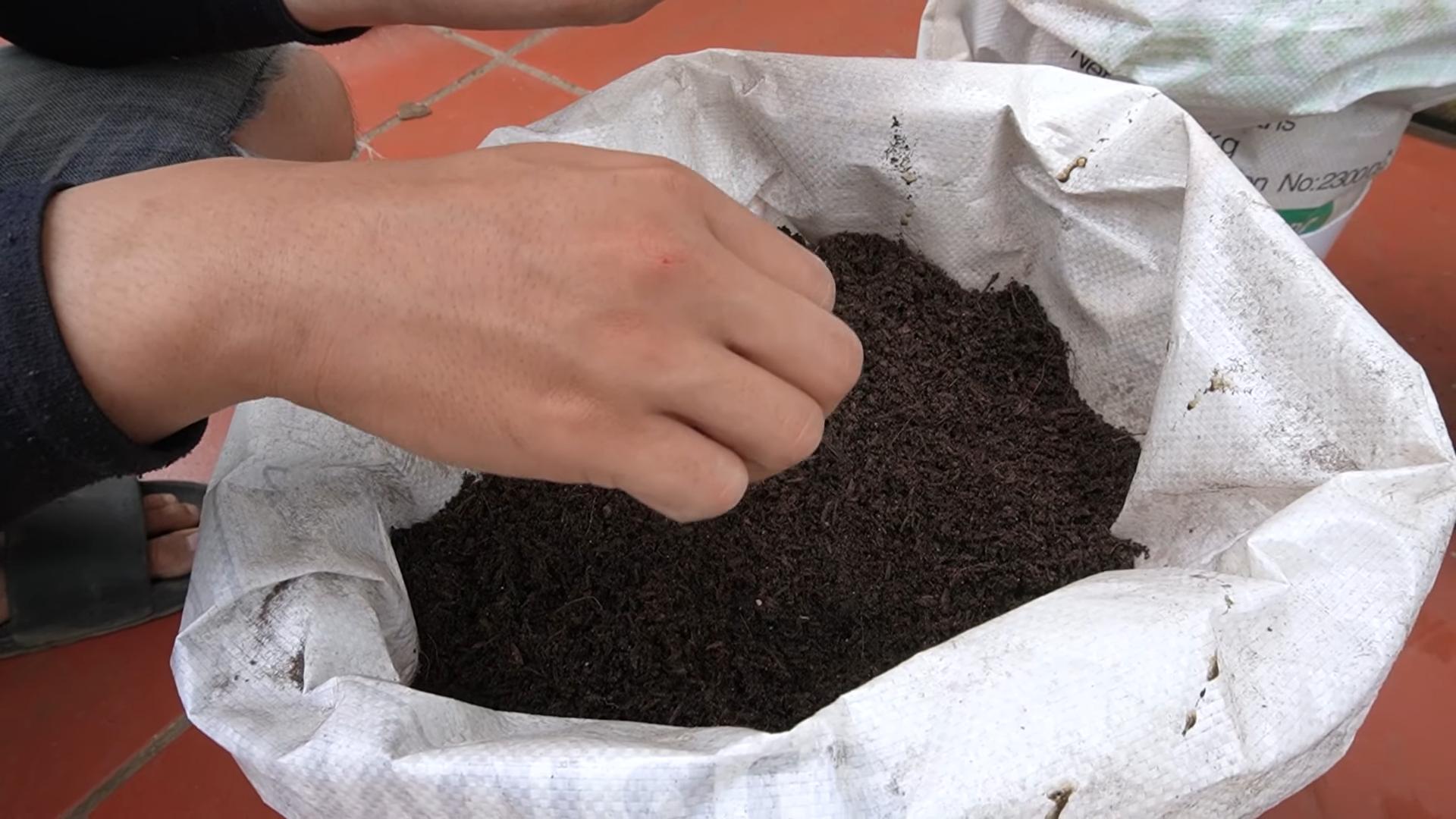Container Cabbage Gardening: Ever dreamt of harvesting your own crisp, flavorful cabbage right from your patio or balcony? I know I have! Forget those sprawling fields – you can absolutely cultivate these leafy greens in containers, even if you’re short on space. This DIY guide is your ticket to fresh, homegrown cabbage, no matter where you live.
Cabbage, a staple in cuisines worldwide, boasts a rich history dating back to ancient times. From sauerkraut in Germany to kimchi in Korea, this humble vegetable has nourished cultures for centuries. But you don’t need to be a seasoned farmer to enjoy its benefits.
Why embrace container cabbage gardening? Well, imagine the satisfaction of snipping off a vibrant head of cabbage, knowing exactly where it came from and what went into growing it. Plus, container gardening offers unparalleled control over soil quality, watering, and pest management. No more battling weeds or worrying about contaminated soil! This DIY project is perfect for apartment dwellers, urban gardeners, or anyone seeking a convenient and rewarding way to grow their own food. Let’s dive in and unlock the secrets to successful container cabbage gardening!

Container Cabbage Gardening: A Beginner’s Guide to Growing Your Own!
Hey there, fellow gardening enthusiasts! I’m so excited to share my experience with growing cabbage in containers. It’s surprisingly easy, even if you don’t have a huge backyard. I’ve found that container gardening is a fantastic way to enjoy fresh, homegrown veggies, and cabbage is a surprisingly rewarding choice. Let’s dive in!
Choosing the Right Cabbage Variety
Before we get our hands dirty, let’s talk cabbage varieties. Not all cabbages are created equal, especially when it comes to container gardening. You’ll want to choose varieties that are more compact and mature relatively quickly. Here are a few of my favorites:
* ‘Dwarf Morden’: This is a super compact variety, perfect for smaller containers. It matures in about 60-70 days.
* ‘Golden Acre’: A classic early variety that produces small to medium-sized heads in around 50-60 days.
* ‘Red Express’: If you’re looking for a splash of color, ‘Red Express’ is a great choice. It matures in about 70-75 days and has a slightly sweeter flavor.
* ‘Savoy Ace’: Savoy cabbages have crinkled leaves and a milder flavor. ‘Savoy Ace’ is a good option for containers, maturing in about 80 days.
Gathering Your Supplies
Okay, now for the fun part – gathering our supplies! Here’s what you’ll need to get started:
* Containers: Choose containers that are at least 12 inches in diameter and 12 inches deep. Cabbage needs room for its roots to grow. I prefer using plastic or resin containers because they’re lightweight and retain moisture well. Make sure your containers have drainage holes!
* Potting Mix: Don’t use garden soil in your containers! It’s too heavy and doesn’t drain well. Instead, opt for a high-quality potting mix that’s specifically formulated for containers. I like to use a mix that contains peat moss, perlite, and vermiculite.
* Cabbage Seedlings or Seeds: You can either start your cabbage from seed or purchase seedlings from a local nursery. Starting from seed gives you more control over the process, but seedlings are a faster and easier option.
* Slow-Release Fertilizer: Cabbage is a heavy feeder, so you’ll need to provide it with plenty of nutrients. A slow-release fertilizer will gradually release nutrients into the soil over time.
* Watering Can or Hose: You’ll need a way to water your cabbage plants regularly.
* Gardening Gloves: Protect your hands from dirt and potential irritants.
* Trowel or Small Shovel: For planting and transplanting.
* Optional:
* Slug and Snail Bait: These pests can be a problem for cabbage.
* Insecticidal Soap: For controlling aphids and other pests.
* Row Covers: To protect your plants from frost and pests.
Planting Your Cabbage
Alright, let’s get planting! Whether you’re starting from seed or using seedlings, the process is pretty straightforward.
Starting from Seed (Optional)
1. Sow Seeds Indoors (6-8 weeks before the last frost): Fill seed trays or small pots with seed-starting mix. Sow the seeds about ¼ inch deep and gently water them.
2. Provide Light and Warmth: Place the seed trays in a warm location (around 70-75°F) and provide them with plenty of light. A sunny windowsill or a grow light will work well.
3. Keep the Soil Moist: Water the seedlings regularly, keeping the soil consistently moist but not soggy.
4. Harden Off Seedlings: Before transplanting your seedlings outdoors, you’ll need to harden them off. This means gradually exposing them to outdoor conditions over a period of 7-10 days. Start by placing them in a sheltered location for a few hours each day, gradually increasing the amount of time they spend outdoors.
Planting Seedlings
1. Prepare the Container: Fill your container with potting mix, leaving about an inch or two of space at the top.
2. Dig a Hole: Dig a hole in the center of the container that’s large enough to accommodate the root ball of your seedling.
3. Remove the Seedling from its Container: Gently remove the seedling from its container, being careful not to damage the roots. If the roots are tightly bound, gently loosen them with your fingers.
4. Plant the Seedling: Place the seedling in the hole and backfill with potting mix. Gently firm the soil around the base of the plant. Make sure the top of the root ball is level with the soil surface.
5. Water Thoroughly: Water the seedling thoroughly after planting.
6. Add Slow-Release Fertilizer: Sprinkle a slow-release fertilizer around the base of the plant, following the instructions on the package.
Caring for Your Cabbage
Now that your cabbage is planted, it’s time to provide it with the care it needs to thrive.
1. Watering: Cabbage needs consistent moisture, especially during hot weather. Water deeply whenever the top inch of soil feels dry to the touch. Avoid overwatering, as this can lead to root rot. I usually water every other day, but it depends on the weather.
2. Fertilizing: In addition to the slow-release fertilizer you added at planting time, you may need to supplement with liquid fertilizer every few weeks. Use a balanced fertilizer (e.g., 10-10-10) diluted to half strength.
3. Sunlight: Cabbage needs at least 6 hours of sunlight per day. Place your containers in a sunny location.
4. Pest Control: Cabbage can be susceptible to pests such as aphids, cabbage worms, and slugs. Inspect your plants regularly for signs of infestation.
* Aphids: These tiny insects can suck the sap from your plants, causing them to weaken and become distorted. You can control aphids with insecticidal soap or by simply washing them off with a strong stream of water.
* Cabbage Worms: These green caterpillars can devour your cabbage leaves. Handpick them off your plants or use a biological insecticide such as Bacillus thuringiensis (Bt).
* Slugs and Snails: These slimy pests can chew holes in your cabbage leaves. Use slug and snail bait or handpick them off your plants at night.
5. Weed Control: Keep your containers free of weeds, as they can compete with your cabbage for nutrients and water. Hand-pull any weeds that appear.
6. Crop Rotation (If Applicable): If you’re growing cabbage in the same containers year after year, it’s a good idea to practice crop rotation. This means planting different types of vegetables in the containers each year to help prevent the buildup of soilborne diseases.
Harvesting Your Cabbage
The moment we’ve all been waiting for – harvesting! Cabbage is typically ready to harvest when the heads are firm and feel heavy for their size. The exact time will depend on the variety you’re growing, but it’s usually around 50-80 days after planting.
1. Check for Firmness: Gently squeeze the cabbage head. If it feels firm and solid, it’s ready to harvest.
2. Cut the Head: Use a sharp knife to cut the cabbage head from the stem, leaving a few outer leaves attached.
3. Store Properly: Store your harvested cabbage in the refrigerator. It will keep for several weeks.
Troubleshooting
Even with the best care, you might encounter a few problems along the way. Here are some common issues and how to address them:
* Yellowing Leaves: This could be a sign of nutrient deficiency, overwatering, or disease. Check the soil moisture and fertilize if necessary. If the problem persists, consult a local gardening expert.
* Splitting Heads: This can happen if the cabbage receives too much water after a period of drought. Try to maintain consistent soil moisture.
* Pest Infestations: As mentioned earlier, cabbage can be susceptible to pests. Regularly inspect your plants and take action as needed.
* Slow Growth: This could be due to insufficient sunlight, poor soil, or nutrient deficiency. Make sure your plants are getting enough sunlight and fertilize them regularly.
Enjoying Your Homegrown Cabbage
Congratulations! You’ve successfully grown cabbage in containers. Now it’s time to enjoy the fruits (or rather, vegetables) of your labor. Cabbage is incredibly versatile and can be used in a variety of dishes, from coleslaw and sauerkraut to stir-fries and soups. I love using my homegrown cabbage in fresh salads and hearty stews.
Growing cabbage in containers is a rewarding experience

Conclusion
So, there you have it! Container cabbage gardening isn’t just a possibility; it’s a surprisingly simple and rewarding way to enjoy fresh, homegrown cabbage, even if you’re short on space. We’ve walked through the steps, from selecting the right container and soil to nurturing your cabbage plants to a bountiful harvest.
Why is this DIY trick a must-try? Because it democratizes gardening. It removes the barrier of needing a large plot of land, making fresh, healthy produce accessible to apartment dwellers, balcony gardeners, and anyone with a sunny patio. Imagine stepping outside your door and harvesting crisp, vibrant cabbage leaves for your salads, slaws, or stir-fries. The taste of homegrown is simply unmatched, and the satisfaction of nurturing your own food from seed to table is incredibly fulfilling.
But the benefits extend beyond just taste and convenience. Container cabbage gardening allows you to control the growing environment, minimizing the risk of soilborne diseases and pests that can plague in-ground gardens. You can easily move your containers to chase the sun or protect them from harsh weather. Plus, it’s a fantastic way to get your hands dirty (literally!) and connect with nature, even in the heart of the city.
Don’t be afraid to experiment! Try different varieties of cabbage to find your favorites. Red cabbage adds a beautiful splash of color to your garden and your plate, while savoy cabbage offers a more delicate flavor and texture. You can also companion plant with herbs like dill or rosemary to deter pests and enhance the flavor of your cabbage. Consider adding marigolds to your container for their pest-repelling properties and cheerful blooms.
For a fun variation, try succession planting. Plant a new batch of cabbage seedlings every few weeks to ensure a continuous harvest throughout the growing season. This is especially useful if you enjoy cabbage regularly and want a steady supply. You can also experiment with different container sizes and materials. While we recommend a minimum of 5 gallons, you might find that larger containers yield even bigger and more robust cabbages. Just be sure to choose a container with adequate drainage holes.
Ready to embark on your container cabbage gardening adventure? We encourage you to give it a try! It’s easier than you think, and the rewards are well worth the effort. Don’t be intimidated if you’re a beginner gardener. Cabbage is a relatively forgiving plant, and with a little care and attention, you’ll be harvesting your own delicious cabbage in no time.
Most importantly, we want to hear about your experience! Share your tips, tricks, and triumphs in the comments below. What varieties of cabbage did you grow? What challenges did you face, and how did you overcome them? Your insights can help other aspiring container cabbage gardeners succeed. Let’s create a community of urban farmers, one container cabbage at a time! We are excited to see your container cabbage gardening success!
Frequently Asked Questions (FAQ)
What is the best time of year to start container cabbage gardening?
The best time to start container cabbage gardening depends on your climate. Cabbage is a cool-season crop, so it thrives in temperatures between 60°F and 70°F (15°C and 21°C). In areas with mild winters, you can plant cabbage in the fall for a winter or early spring harvest. In colder climates, start seeds indoors 6-8 weeks before the last expected frost and transplant them outdoors in the spring. You can also plant a second crop in late summer for a fall harvest. Pay attention to your local weather patterns and adjust your planting schedule accordingly.
What size container is needed for growing cabbage?
A minimum of 5 gallons is recommended for growing a single cabbage plant in a container. However, larger containers (7-10 gallons or more) are even better, as they provide more room for the roots to grow and allow the plant to access more nutrients and water. The larger the container, the less frequently you’ll need to water and fertilize. Make sure the container has adequate drainage holes to prevent waterlogging, which can lead to root rot.
What type of soil is best for container cabbage gardening?
Cabbage prefers well-draining, fertile soil that is rich in organic matter. A good potting mix specifically formulated for vegetables is ideal. You can also create your own mix by combining equal parts of compost, peat moss (or coconut coir), and perlite or vermiculite. Avoid using garden soil in containers, as it can become compacted and doesn’t drain well. The ideal soil pH for cabbage is between 6.0 and 7.0.
How often should I water my container cabbage plants?
Water your container cabbage plants regularly, especially during hot, dry weather. The soil should be kept consistently moist but not waterlogged. Check the soil moisture by sticking your finger about an inch deep into the soil. If it feels dry, it’s time to water. Water deeply, until water drains out of the drainage holes. Avoid overhead watering, as this can promote fungal diseases.
What kind of fertilizer should I use for container cabbage?
Cabbage is a heavy feeder, so it needs regular fertilization. Use a balanced fertilizer (e.g., 10-10-10) or a fertilizer specifically formulated for vegetables. Apply fertilizer according to the package directions. You can also supplement with organic fertilizers like compost tea or fish emulsion. Fertilize every 2-3 weeks during the growing season.
How much sunlight does cabbage need?
Cabbage needs at least 6 hours of direct sunlight per day to thrive. Choose a sunny location for your container cabbage garden. If you live in a very hot climate, provide some afternoon shade to prevent the plants from overheating.
What are some common pests and diseases that affect cabbage?
Common pests that affect cabbage include cabbage worms, aphids, and flea beetles. Cabbage worms can be controlled with Bacillus thuringiensis (Bt), a natural insecticide. Aphids can be washed off with a strong stream of water or treated with insecticidal soap. Flea beetles can be deterred with row covers or treated with neem oil. Common diseases that affect cabbage include black rot and clubroot. Prevent these diseases by using disease-resistant varieties, practicing crop rotation, and ensuring good drainage.
How do I know when my cabbage is ready to harvest?
Cabbage is ready to harvest when the head is firm and solid to the touch. The size of the head will vary depending on the variety. Check the seed packet or plant tag for the expected head size. To harvest, cut the head off at the base with a sharp knife. Leave the outer leaves intact, as they may produce smaller side heads.
Can I grow different varieties of cabbage in containers?
Yes, you can grow different varieties of cabbage in containers. Consider the size of the mature plant when choosing varieties. Smaller varieties, such as ‘Golden Acre’ or ‘Danish Ballhead,’ are well-suited for container gardening. You can also grow red cabbage, savoy cabbage, or Chinese cabbage in containers.
Can I overwinter cabbage in containers?
In mild climates, you can overwinter cabbage in containers. Provide protection from frost and freezing temperatures by moving the containers to a sheltered location or covering them with a blanket or tarp. In colder climates, cabbage may not survive the winter in containers.




Leave a Comment